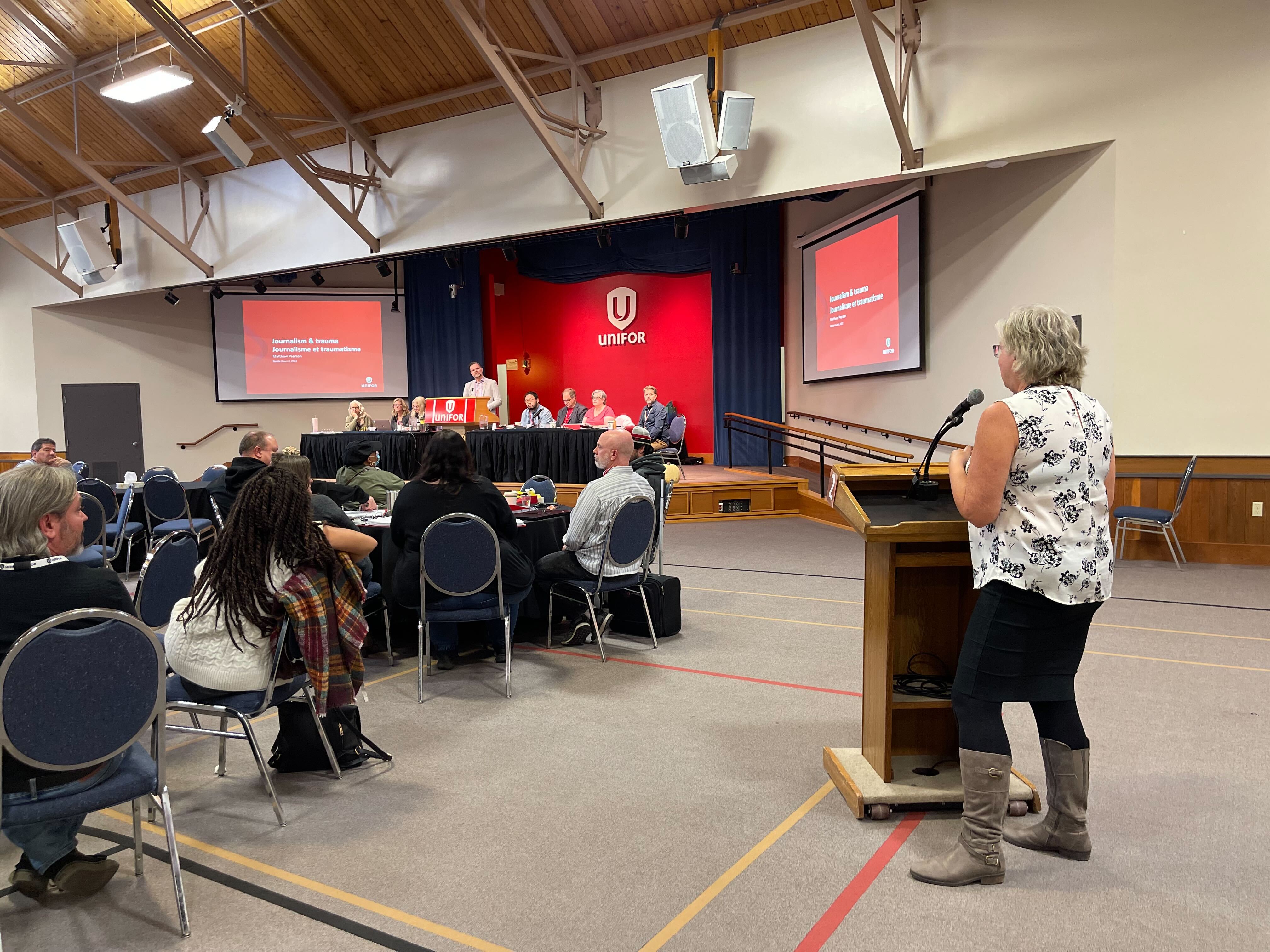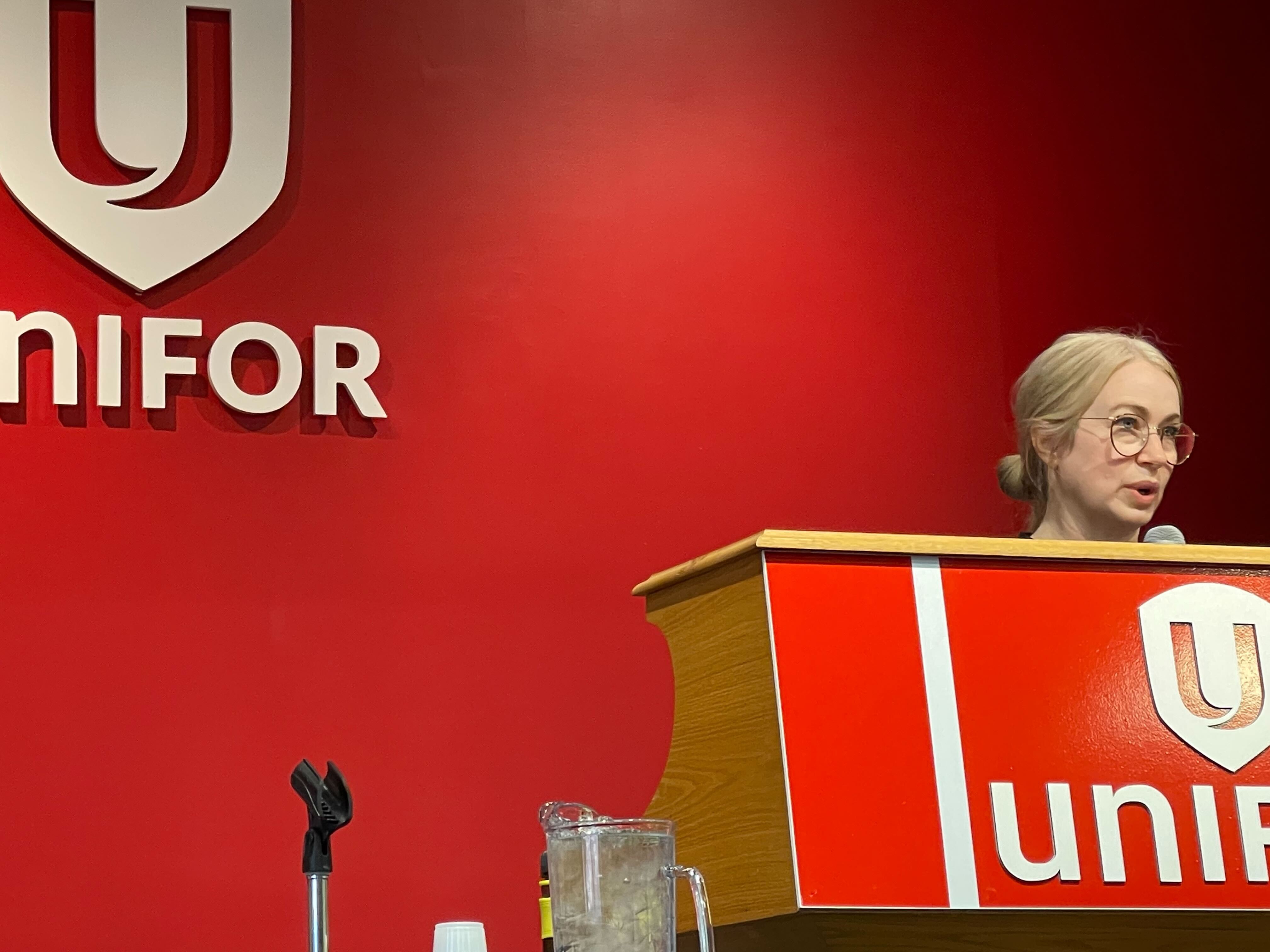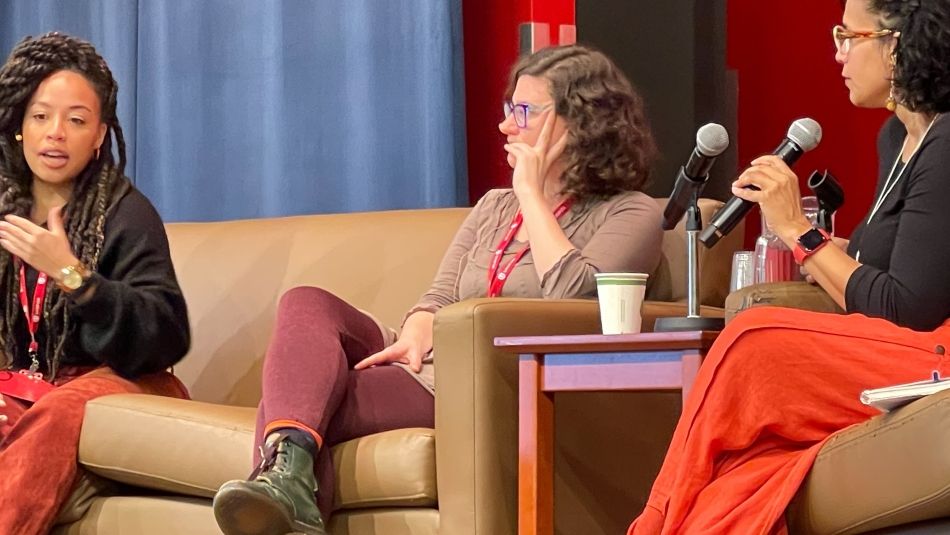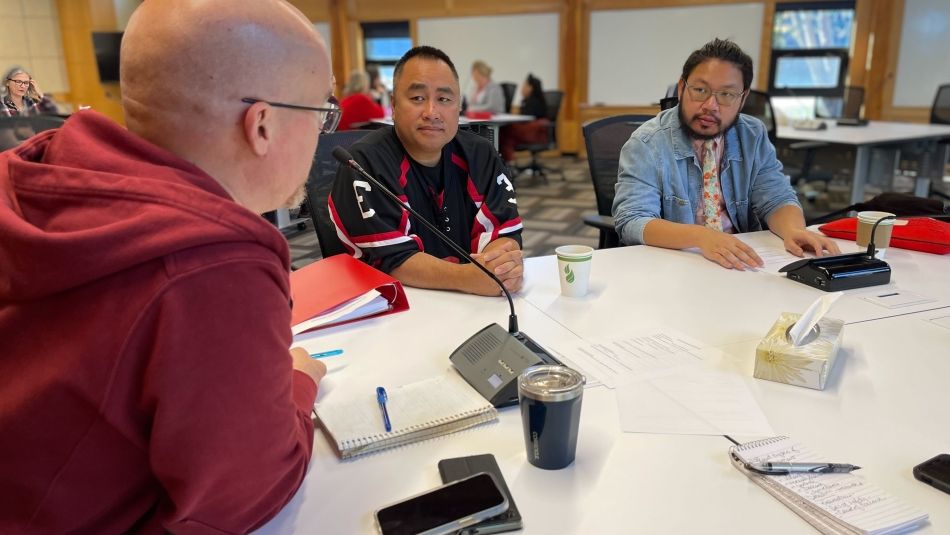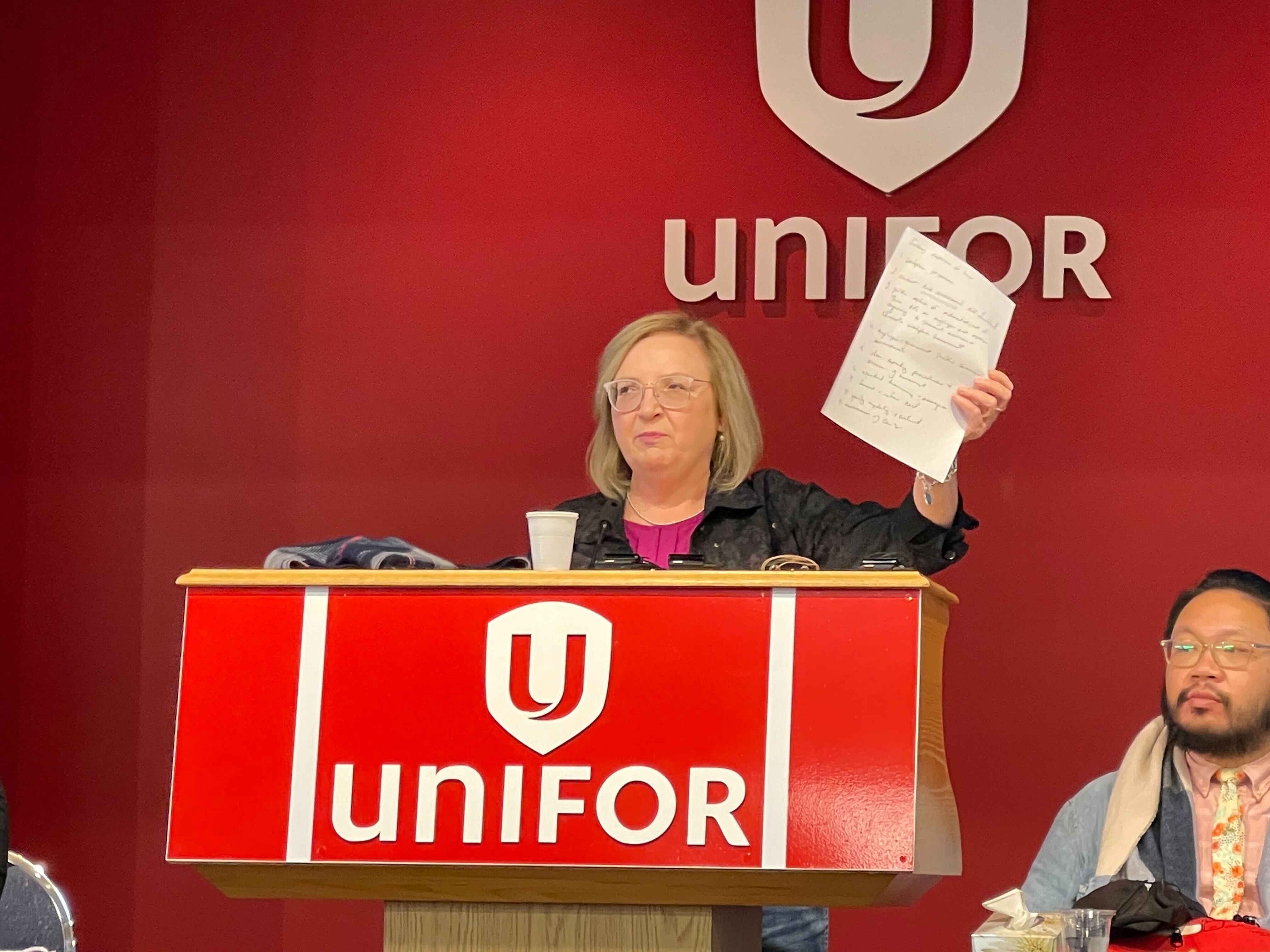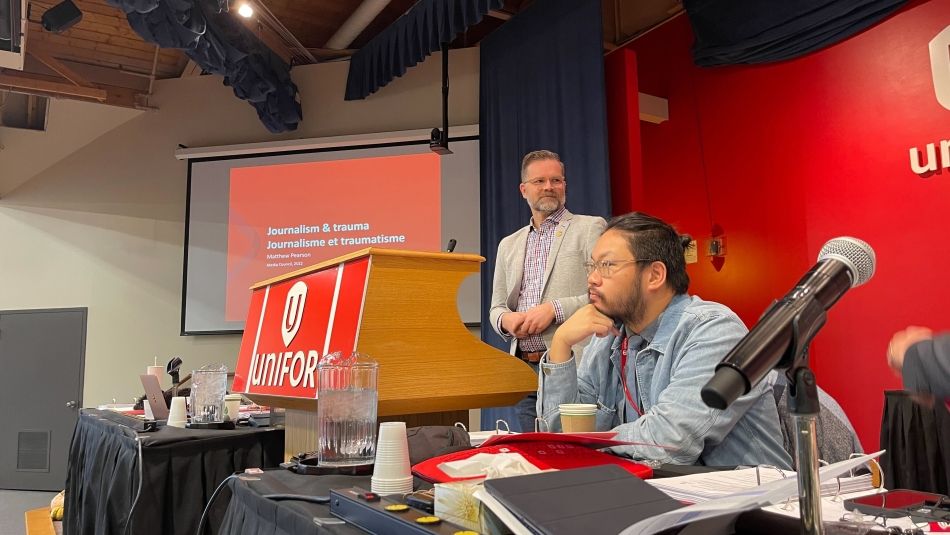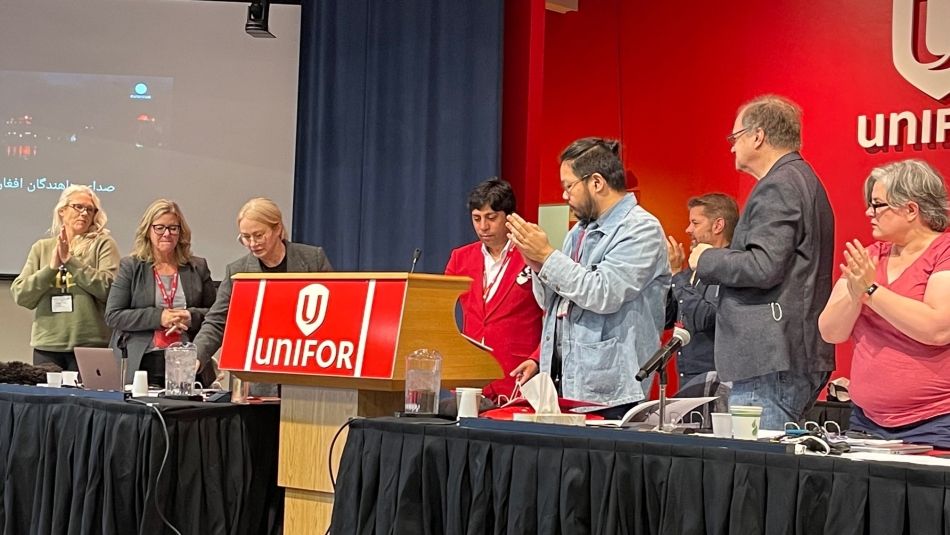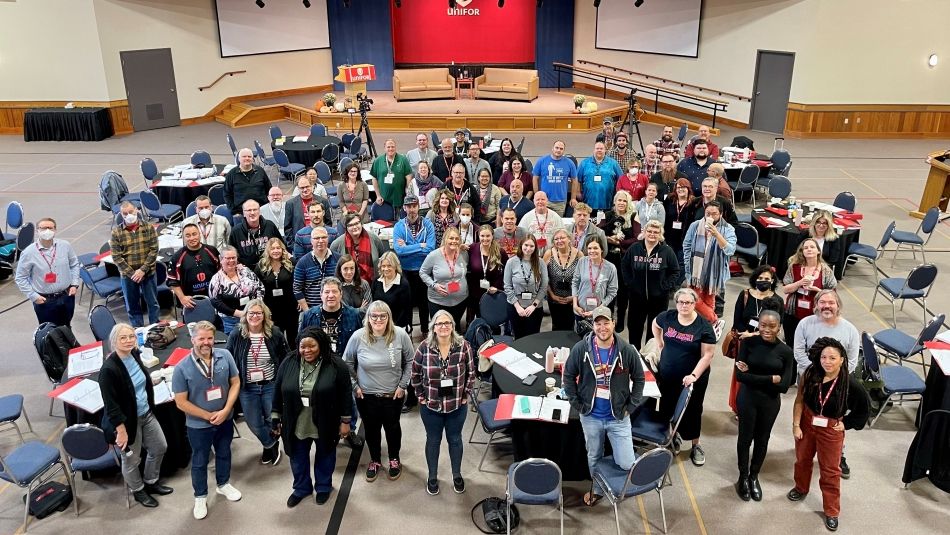
Share
Death threats. Toxic workplaces. Being followed home. Doxxing.
These are some on-the-job abuses journalists face routinely.
Unifor’s Media Council took place Oct. 28 to 30 at the Unifor Family Education Centre in Port Elgin, Ont. The focus was on harassment – online and in the field – and its impact on media workers and the supports the union are developing, such as the helpishere website.
“Our members are really stretched thin and stuck in these toxic workplaces and in some cases, their mental health is really suffering,” said Media Council Chairperson Jennifer Moreau. “In some extreme cases, journalists have left the industry.”
The turning point for Canadian journalists was when People’s Party of Canada leader Maxime Bernier urged his supporters to “play dirty” with journalists in Oct. 2021, Moreau said.
“When I hear stories about our members, who are cornered on their way to work or people too afraid to have their company’s decals on their vehicles, I feel it’s only a matter of time before something really serious is going to happen and someone gets hurt. And it’s getting worse,” she said.
Unifor conducted a survey in late 2021 to early 2022 to document experiences of harassment journalists faced. Moreau said the key takeaways were women, journalists of colour and 2SLGBTQI+ were disproportionately targeted for harassment, that media workers wanted a point person to go to address harassment and clarity through collective agreements on how to report harassment.
In a panel moderated by Toronto Star columnist Shree Paradkar, journalists Angelyn Francis and Nora Loreto spoke candidly about dealing with personal online attacks.
Loreto said in 2018, she tweeted about the $4 million donations (at the time) to the Humboldt Broncos bus crash victims, pointing out the “maleness, the youthfulness and whiteness of the victims are, of course, playing a significant role.” She still gets hate for it – with harassment going as far as having children protective services called on her and threats to Loreto’s grandmother.
“It started a massive firestorm,” explained Loreto onstage. “Jason Kenney got involved. Sarah Palin got involved. I had 35 million Twitter impressions in four days and every eight seconds, I was receiving a message every eight seconds, whether it was Facebook, Twitter or phones. The tactics are cruel.”
The results of such abuse can lead to journalistic chill, meaning reporters may hesitate to cover certain stories if they are continuously harassed and employers may freeze up and take journalists off certain beats or limit other opportunities, said Francis.
During the conference, delegates broke out into separate group workshops about online harassment and toxic workplaces, emphasizing on these key points:
- Employers are responsible for ensuring the workplace is free from violence and harassment, and for journalists, the world of work includes the public sphere and online spaces.
- Harassment of journalists is a health and safety issue, it’s an equity issue and it’s a press freedom issue. Women, journalists of colour and 2SLGBTQI+ folks are disproportionately targeted, and the goal is to silence media workers.
“It was a heavy weekend talking about these newsroom issues,” said Unifor Media Director Randy Kitt. “We need to educate our union leadership on what this harassment looks like, how we’re going to combat it and how we’re going to support our journalists and media workers.”
In her address, Unifor National President Lana Payne, who is a former journalist, said the union is always pushing back hard against harassment, sexism and racism and that media unions, media employers and governments all have a role to play to dismantle the misogyny and racism that underpin this culture.
“It is not enough for media employers to say they have no responsibility here just because the harassment is happening online or in the public spaces,” said Payne. “This is still your workplace.”
Payne said that when speaking with some of the big media players in the past couple of weeks, this issue has been one of the priority ones that she has brought forward.
“Journalists work everywhere. Employers have to do more, it’s their responsibility,” she said. “But as is often the case, they will need to be pushed. They will need to be convinced, they will need us to come forward with solutions.”
Carleton University professor Matthew Pearson – who led a presentation on trauma and journalism – told council delegates the mental health fallout from reporting on traumatic stories, includes high rates of burnout, anxiety, anger, nightmares, an inability to sleep and suicidal thoughts.
“Trauma overwhelms a person’s ability to cope and it involves an experience of loss of control,” he said. “Part of the issue is you don’t want to be seen as weak [by employers]. This requires a culture change."
Delegates also heard the harrowing escape of Afghan TV journalist and satirist Siar Mateen from his country when the Taliban overtook it in August.
Mateen arrived in Canada with his family in late September, thanks to the help of Unifor partnership with Journalists for Human Rights, who worked together to bring eight families and other individuals – a total of around 50 people – and help them get asylum, as well as providing support and resources for many more fleeing Afghans.
Unifor National, the Social Justice Fund and media locals donated more than $200,000 to support the Afghan media workers, Canadian Women for Women in Afghanistan and other organizations.
Mateen told the crowd he produced a critical comedy show that exposes the violations women face in Afghanistan. He would often play women in his work, which led to death threats from the Taliban and the corrupt government. He teared up, describing how his colleagues were murdered during one show taping.
He and his family rushed to the airport in August, but it had been overrun by Taliban soldiers. He grabbed a chance to escape with other journalists under the guise of a wedding party to pass Taliban checkpoints and, eventually, into safety.
“The happiest day of my life that I was able to flee,” Mateen said. “There’s always light at the end of the tunnel and I’m very thankful to the Canadian people.”

